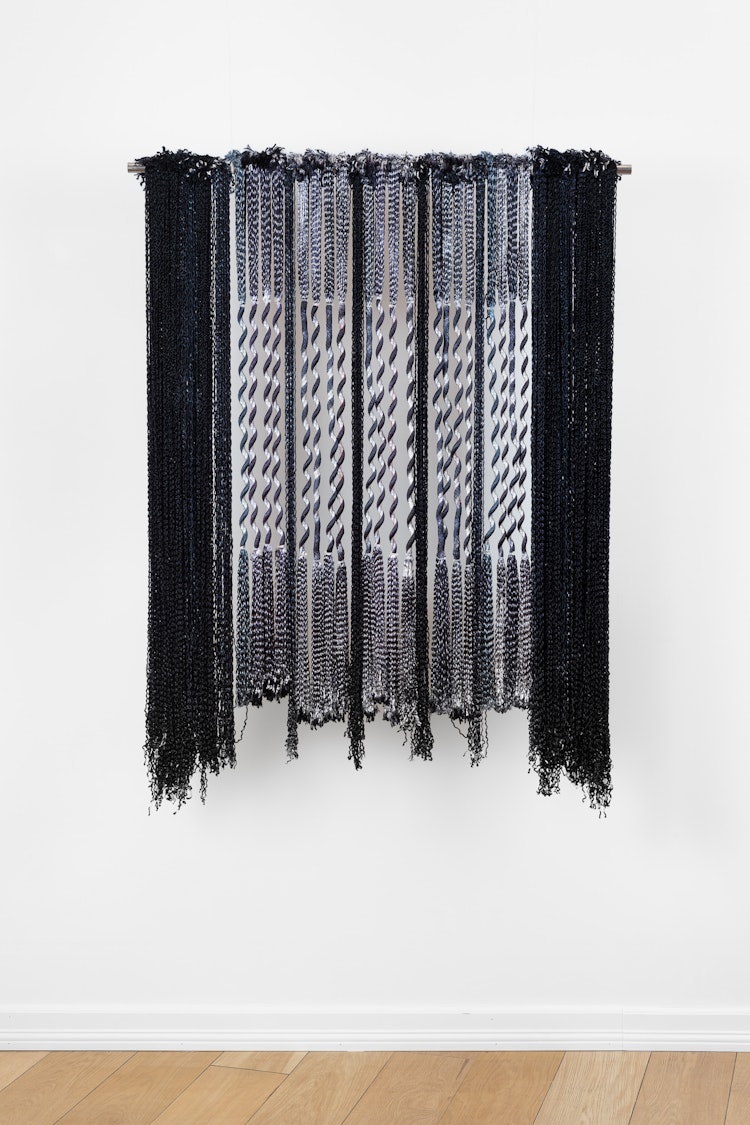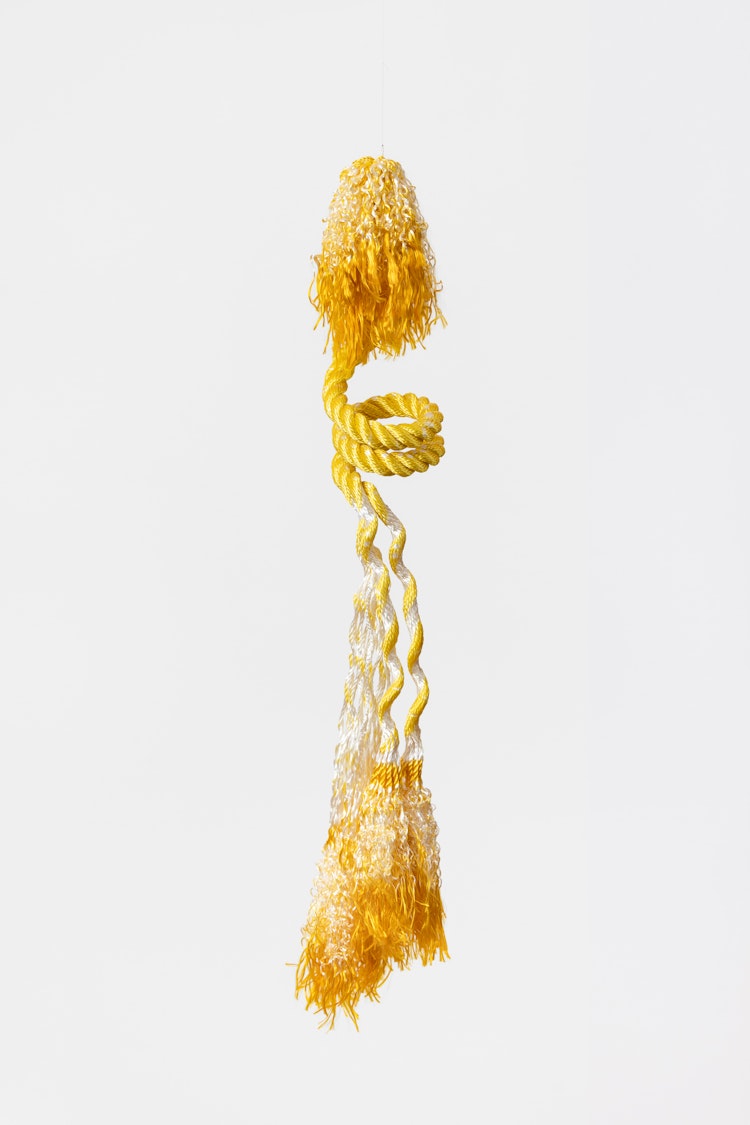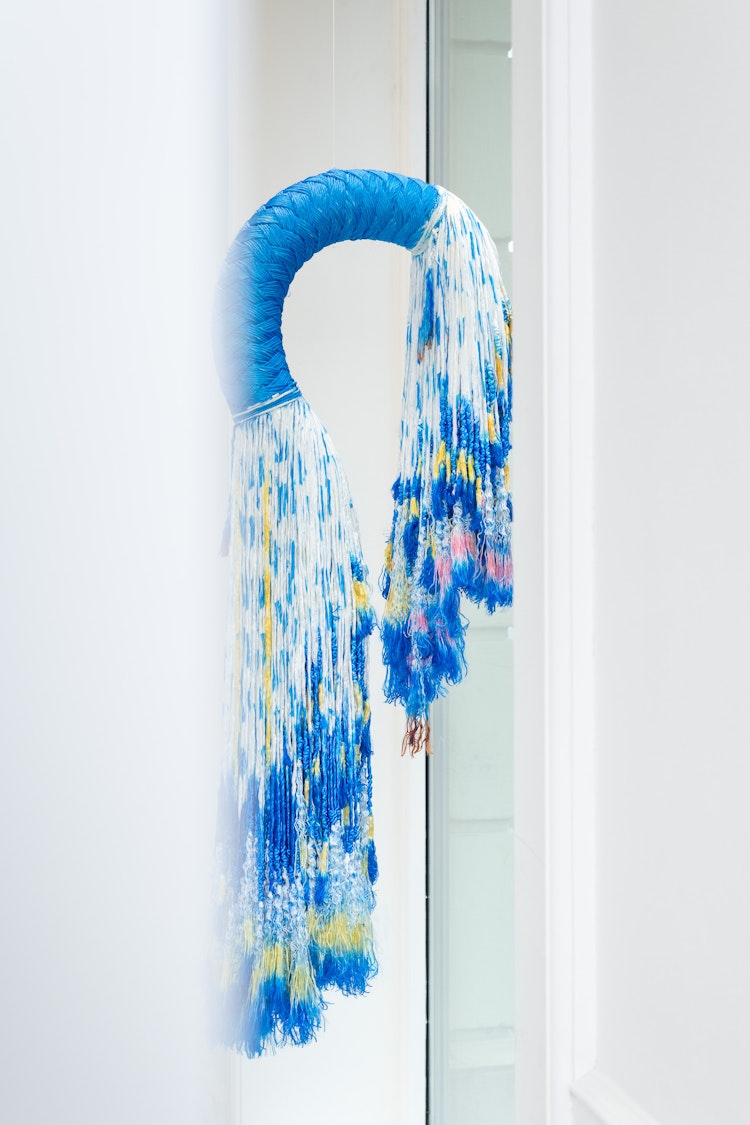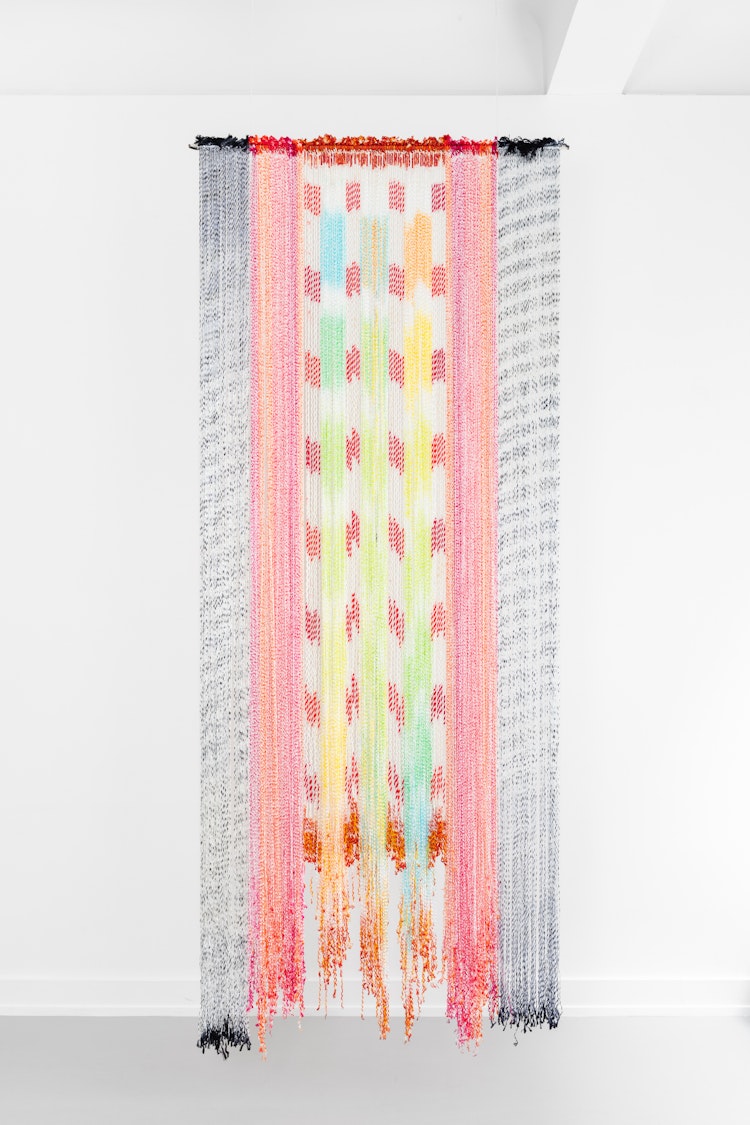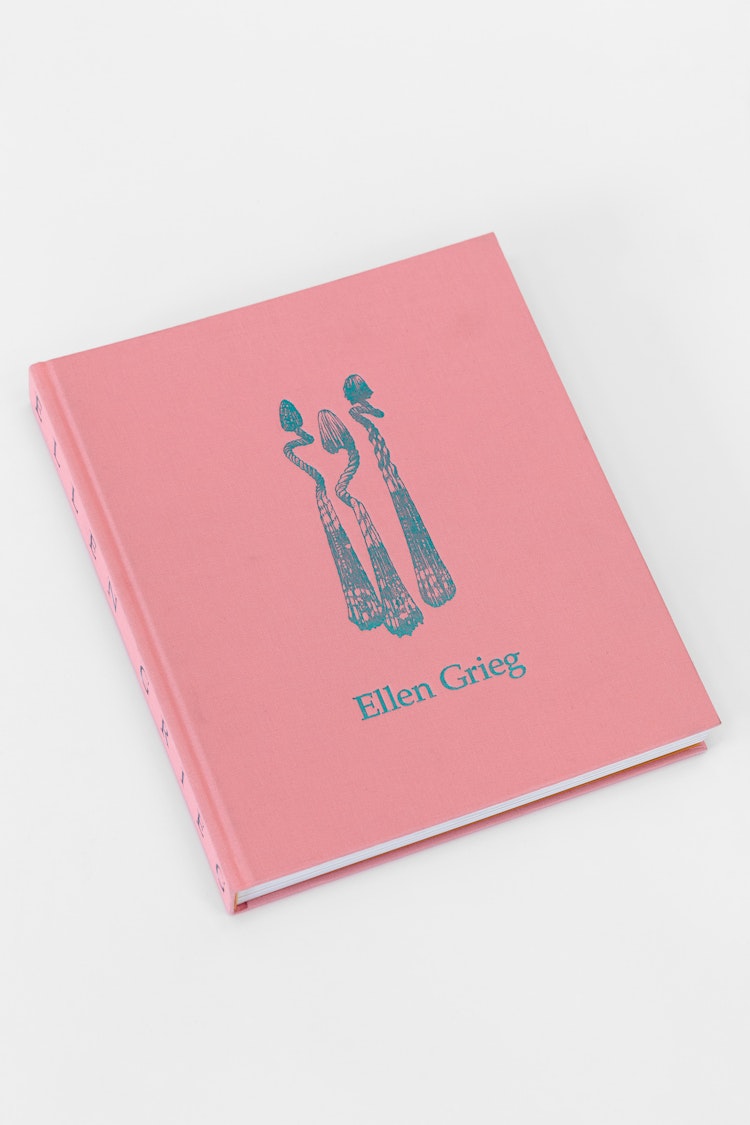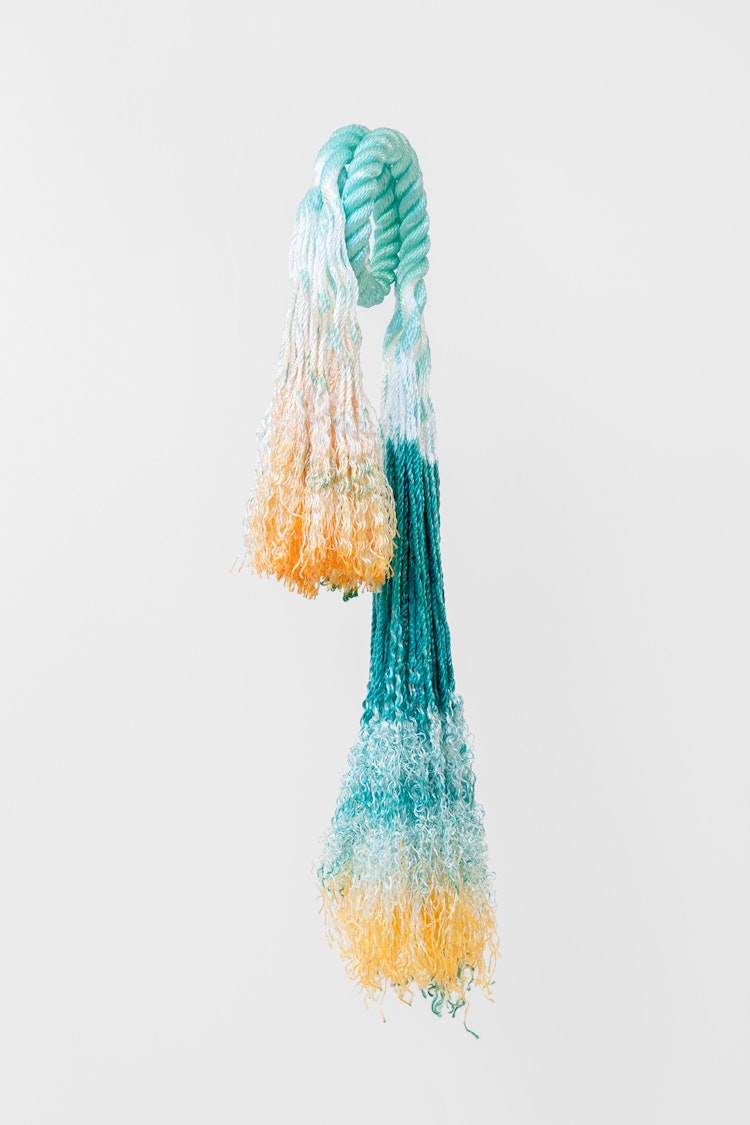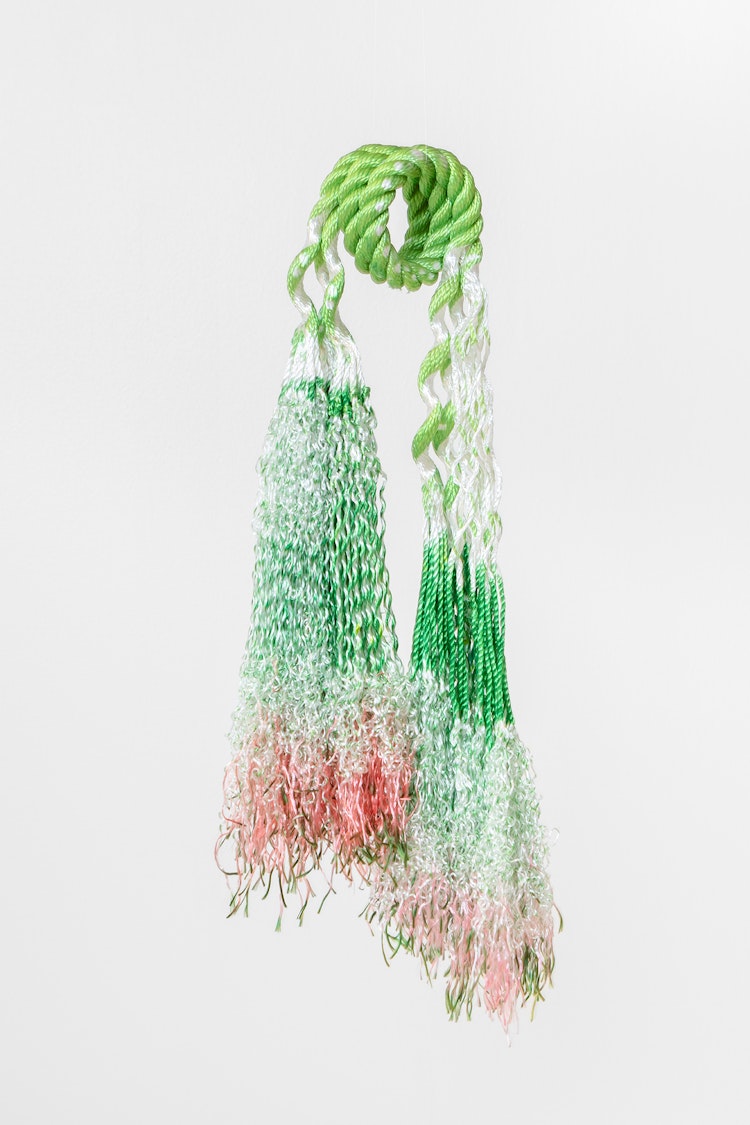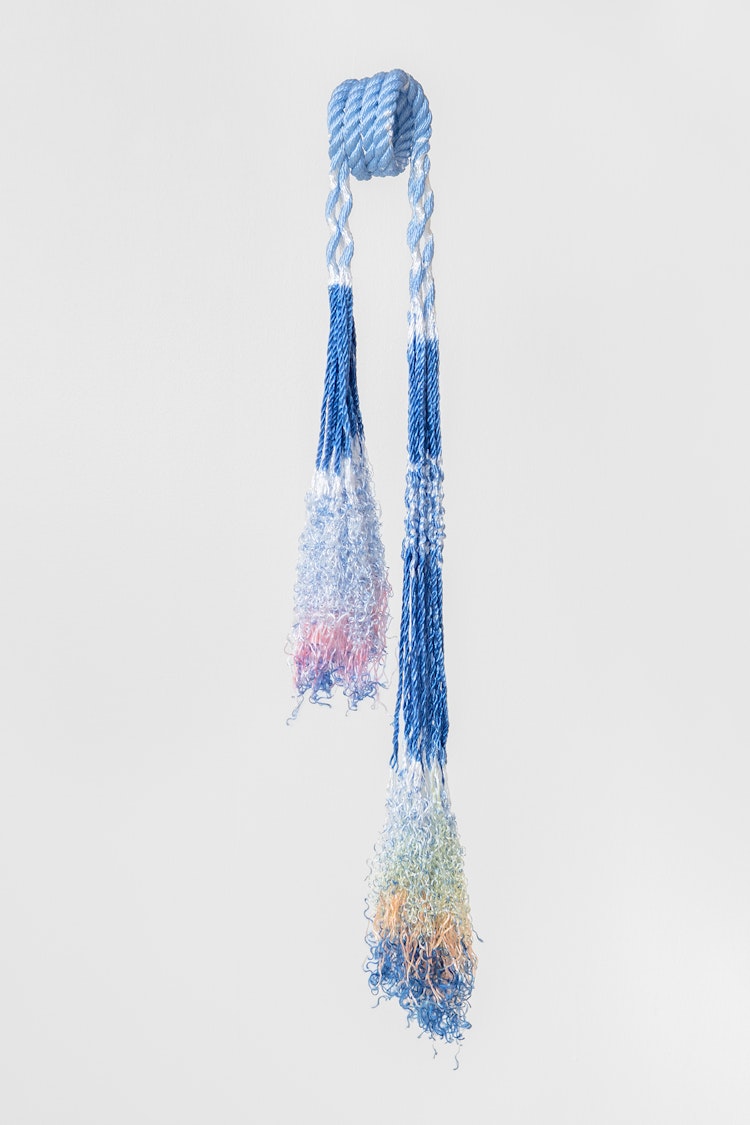Ellen Grieg is educated at the National School of Handicrafts and Art Industry in Oslo, the Art Academy in Brattislava and the College of Arts and Crafts in Prague.
Through a long career as an artist Grieg has accumulated deep knowledge when it comes to colors and various artistic techniques. Grieg’s work is characterized by an abstract visual language created with textile materials, where patterns, colors, structures and materiality are the main elements.
More recently Grieg has worked with the series ”Transformations” where thick colored ropes hang freely in the room; they are voluminous, take up physical space, but also visual space through use of strong colors. The abstract style emphasizes the materiality and creates at the same time an immediate experience of the work. The works often consists of brightly colored spirals that hang from the ceiling, where the spirals unravel more and more the further down the threads hang. Through her unreserved play with rope and textiles, Grieg has given textile art an eternal actuality in Norwegian art history.
Grieg has been purchased by the The National Museum, Oslo Municipality’s Art Collection, the Ministry of Foreign Affairs and the Norwegian Council of Culture.
On Ellen Grieg
By André Gali
Ellen Grieg (B. 1948, Oslo) is an artist who explores an abstract idiom in textile materials. In particular, she has worked with tapestries, whereas more recently she has become known for her heavy, coloured rope sculptures that hang freely in space. for a while, she focused largely in woven utility fabrics and became known for her colourful shawls. When art critics of my generation hear Griegs name, the exhibitions they are most like to remember are her solo show at Lynx (2015), her participation in the National Annual Autumn Exhibition (2016) or her solo show at Studio 17 in Stavanger (2016). At least, these are what spring to my mind - and exciting events they certainly were! There was something fresh and distinctive, playful and poetic about her work. Consequently, I was thrilled when she agreed to contribute a fine selection of works for the 7th Tallinn Applied Art Triennale in April 2017, where I was a chair-man of the jury.
As part of a generation of pioneers in textile arts, Grieg trained and established herself as an artist in the mid-1970s, during a period of turbulent politics, when textile art was a medium people associated with women’s liberation. Viewed as a predominantly women’s occupation, textile art was on the verge of transitioning from the field of industrial art and decorative design to the realm of contemporary fine art. although at the same time Norway’s textile industry was losing ground, the country’s textile artists were moving out of the ordinary shops and into the galleries and museums, where textiles could be displayed as autonomous creations, regardless of their function. (…)
Patterns, colours, textures and materiality are the fundamental parameters of Grieg’s work. Her Abstract idiom highlights materiality and creates an impression of immediacy and physical-visual intensity. The emphasis on abstraction in tapestry weaving and on sculptural qualities were both trends in the 1970s. for many Norwegian textile artists, Poland was a source of much inspiration, but whereas several of Grieg’s fellow students journeyed to that country after graduating in order to learn from the internationally renowned groups working with experimental textile art (sometimes referred to a the fiber art movement), Grieg herself went to Slovakia, where she spent a term at the Bratislava Academy of Art. From there she moved on to the School of Art and Design i Prague. Both institutions were marked by the dictatorships under which they existed, and there were clear guidelines on the kind of art one was allowed to create and on the subject matter that was considered valid. The challenge was to be political in a way that was subtle enough to avoid censorship. After concluding her studies, Grieg ser up her own studio at Frysja in Oslo, where she is still based today.
Grieg has said that it was Brit Fuglevaag who encouraged her to explore the possibilities of nylon rope. In recent years Grieg has added a new dimension - quite literally - to her use of rope as material and theme: she treats it as a sculpture. Many of her works take the form of colourful coils suspended from the ceiling, which progressively unravel the further down they hang. In some cases, the works are site-specific and relate in concrete ways to the surrounding architecture. In their volume, they occupy physical space, but in their use of colours such as yellow, orange, red they also dominate the visual space. they engage with their settings, reformulating and altering the day we experience them. Thanks to their colours you become aware of her sculptures long before encountering them close up.
Recent years have seen a renewal of interest in material-based art; textiles, ceramics, metal and glass. At the same time, interest in abstract idioms has also grown. it could be described as a reappraisal of the intellectual legacy of modernism, but the trend also represents a recognition of a form of perception that is distinct from the transcendental experience of art as described and cultivated in Kantian aesthetics.
Material-based art gives the central role to the body and the senses, while in abstract art the focus is shifted from a narrative about reality, or a representation thereof, to reality itself - to the substance per se in the case of Ellen Grieg’s work. The structure of the rope, its colours and tactility become prominent - from the thick coils at the top down to the small tufts unravelling at the bottom. Even without touching her work, we sense what the threads would feel like to the touch. This relationship between the viewer’s body and the work is enhanced when the work protrudes into the space as a sculpture, thus allowing the viewer to move around it, experiencing it from different angles, but without ever taking the entirety in a single glance. Perception becomes drawn out in time, making the viewer aware of her own presence in the room, and of participating in a dialogue with the work. the viewer is no longer detached form the work (applying a meditative Kantian gaze), but is involved instead in creating a relationship to the work through her own sensing body.
Whether or not Grieg intends it, her rope also has a metaphorical quality. As everyone knows, a rope consists of a multiple of fibres spun together in a way that gives them strength and durability. This aspect allows us to read the rope as the metaphor for the strengt of the collective, for a society in which community is crucial. Where the fibres in Grieg’s work begin to unwind, we get a premonition of culture on the verge of losing its strength and robustness. It is not a reading I want to insist on, and neither do I mean to ascribe intentions to Grieg that she herself would not recognise. even so, it can be interesting to draw parallels between the current political climate and the one that dominated in the years when Grieg was a student. Although many things have changed since then, we have once again become aware of the need to resist conservative forces, to fight for the rights of women an minorities, and to strengthen solidarity. It is evident that art has a role to play here, with its ability to articulate and convey alternative models for how to think about the world and how we can act within it.
